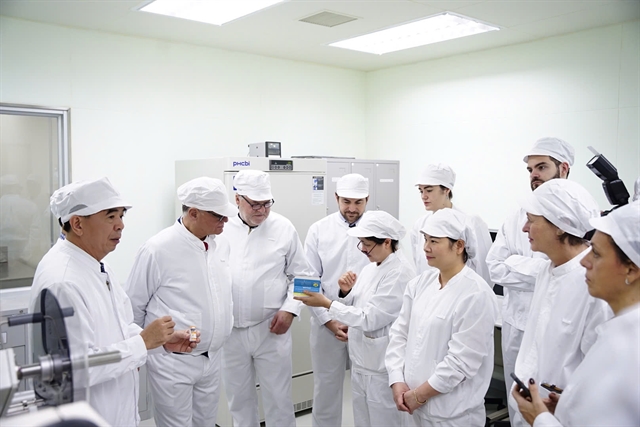 Society
Society

Professor Doctor and Architect Hoàng Đạo Thúy talks to Nhân Dân newspaper about the need to create harmony between the nation’s heritage conservation and development.
 |
| Tràng Tiền Street in the central downtown district Hoàn Kiếm of Hà Nội still retains in good order many of the French architecture, built during the colonial period. — VNA/VNS Photo Phương Hoa |
Professor and Architect Hoàng Đạo Thúy talks to Nhân Dân (People) newspaper about the need to create harmony between the nation’s heritage conservation and development.
In almost every society, there comes a point when people argue that development is coming at the cost of conserving heritage. In your point of view is there a contradiction between conservation and development in Việt
In nature or in any society, the law of elimination will always exist. Elimination in nature happens through evolutionary processes. So it also does in the course of development of all societies in this world. That’s why as time goes by, all structures erected or built by human kind will be destroyed, either by the nature or by the human factors. In short, sooner or later, all projects built by us will gradually disappear.
Another argument I want to mention is that products created by previous generations may not be appreciated by the following generations for various reasons. So they should be destroyed or eliminated. In other words, elimination is but a small stream in the grander course of the creation and development of humankind. That’s why requirements to preserve the previous generations’ products for the next generations runs against the natural law of elimination, destruction and losses.
Basically speaking, conservation and development will always have an antagonistic relationship.
That’s why before we make a decision about whether something is worth preserving, we should answer the questions “What for?”, “Can we do it?” and others.
Nowadays, many people in the world understand the need to preserve some important constructions for future generations. These projects are the historical landmarks of the previous generations.
In other words, all relics, heritage sites and antique items should be protected and preserved. Of course, each of them needs a specific preservation method.
To preserve historical relics, what are the key principles we have to follow?
The most essential principle is to assess the value of relics in all plans for future development.
I should say that in our current course of urban development, relics have not been given due treatment. Any relic needs good surroundings, which will make them prominent in the surrounding modern environment. In order to have good conservation, we have to settle the contradictions between conservation and development.
For example, the old town of
However, in reality, if small and ancient houses and buildings are destroyed, Hồ Chí Minh City will lose its distinctive characteristics which have developed over thousands of years.
How do you respond to a comment from a
If we only conserve buildings that have been classified as historical relics,
I should say, relics in Việt
It is indisputable, any project that has been classified as a historical relic, it will be preserved and conserved for future generations.
Besides, for projects that have been on the list of national historical relics, there will be the budget for preserving and maintaining them. We still need to protect other urban relics which have not been classified as the national historical relics. In my opinion, we should create a “Fund for Urban Relic Protection”.
For example, Hà Nội has a thousand old French villas and
In short, we need to work out the most appropriate ways to conserve these villas but still meet the development requirements.
Some people have suggested that we should move the
I don’t agree! The




